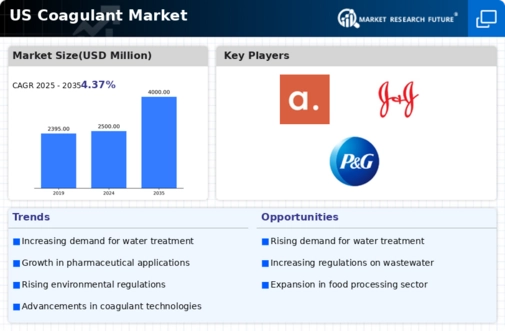US Coagulant Market Summary
The US Coagulant market is projected to grow from 2500 USD Million in 2024 to 4000 USD Million by 2035, reflecting a steady upward trajectory.
Key Market Trends & Highlights
US Coagulant Key Trends and Highlights
- The US Coagulant market is valued at 2500 USD Million in 2024 and is expected to reach 4000 USD Million by 2035.
- A compound annual growth rate (CAGR) of 4.37 percent is anticipated from 2025 to 2035 in the US Coagulant market.
- The market is likely to experience growth driven by increasing demand for water treatment solutions across various industries.
- Growing adoption of advanced coagulant technologies due to rising environmental regulations is a major market driver.
Market Size & Forecast
| 2024 Market Size | 2500 (USD Million) |
| 2035 Market Size | 4000 (USD Million) |
| CAGR (2025 - 2035) | 4.37% |
Major Players
Apple Inc (US), Microsoft Corp (US), Amazon.com Inc (US), Alphabet Inc (US), Berkshire Hathaway Inc (US), Meta Platforms Inc (US), Tesla Inc (US), Johnson & Johnson (US), Visa Inc (US), Procter & Gamble Co (US)














Leave a Comment